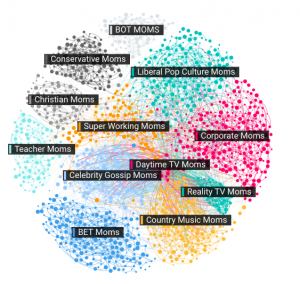By Hannah Chapple
Mom’s control the shopping cart. . . How can CPG brands better understand the most important shopper in the household?
Staying up to speed with the ever-changing wants and interests of consumers is a challenge for the Consumer Packaged Goods (CPG) industry. The once dominant CPG giants, who traditionally came out on top because of their economies of scale and advertising dollars, are now struggling to keep up with consumer trends. To compete, stay relevant, and apply agile strategies, CPG brands must intimately understand their target consumer and keep their finger on the pulse of the market.
One of those target consumers, and arguably the most important, are Moms. Moms are essentially the CFO of the household, and according to Tuning Into Mom, contribute an estimated $2.45 trillion in direct spending in the USA. It’s no wonder CPG brands have identified “Moms” as an important target consumer.
But how can CPG brands unpackage what matters most to Moms?
Historically organizations have grouped “Moms” into a single bucket, based on broad age-based characteristics. However, this broad categorization method doesn’t tell us who Moms really are – what they are interested in, influenced by, and values. While we can make broad assumptions about what may or may not be relevant to this group based on demographics, it is not quantifiable. Not every Mom wants the same product or has the same values. So, if broad categorization is becoming obsolete how can we unpackage who the target consumer – Mom – really is?
Interest-based segmentation presents a powerful and unique opportunity for CPG brands to understand their consumers intimately. The most forward-thinking CPG brands recognize that to create resonating timely and relevant strategies, they need access to high-quality insights generated at the speed of culture.
Who are American Moms?
Using Affinio, the marketing intelligence platform, we analyzed 399,649 Twitter users who self-describe as “Mom” or “Mother” and live in the “USA.” On social media, audiences naturally form into communities based on their shared interests and culture. Using unsupervised segmentation, we can understand how these Moms naturally form into interest-based communities. After all, not all Moms are the same!
The below shows how Moms fallout into interest based communities:
Immediately we can see different segments including Corporate Moms, Moms Who Love Celebrity Gossip, Teacher Moms, and more. What they value and who influences them changes from segment to segment. Although we know all of these segments are Moms, what makes them different? We can now unpackage each segment and hone in on their cultural identity.
What can we learn about each Mom segment? Immediately we have access to insights such as their top shared interests (including celebrities, media, organizations, and brands), self-described locations, biographical keywords, links shared, content favorited, and many more attributes.
As an example, let’s look at the top interests of two segments:
Corporate Moms: named because they self-described with words such as “Working” and “Professional”. Top interests:
- Individuals such as Oprah Winfrey, Anderson Cooper, Barack Obama, and Hillary Clinton
- Brand such as Whole Foods, Starbucks, Target, and Amazon
- Media and publications such as CNN, The New York Times, and The Huffington Post
Celebrity Gossip Moms: named because of their high-affinity to gossip publications and their interest in celebrities. Top interests:
- Individuals such as reality stars Khloe Kardashian, Nicole Polizzi, and Kendra Wilkinson
- Brands such as Sephora, Victoria’s Secret, Urban Decay, and NYX Professional Market
- Media and publications such as E News, Perez Hilton, and People Magazine
While both of these segments fall under the broad category label “Moms,” their interests and affinities to individuals, brands, and media are starkly different. Would you market to these Moms the same way?
How can CPG brands activate target audiences?
Today it is not enough for CPG brands to employ broad advertising strategies and offer discounts on products – consumers want real value. Consumers are not one in the same, and they want to purchase from the companies that align with their unique values and lifestyles and personalize their communications to match their interests and passions.
A Short Example:
Let’s assume a CPG brand wants to run an influencer campaign to help grow their Celebrity Gossip Moms audience segment. Using the audience insights identified above, the brand now has a list of potential people to contact (e.g. Nicole Polizzi) that are already resonating with their target. What if they wanted to create branded content for this campaign? Again, they now have a list of the channels they should leverage to promote this content including E News, Perez Hilton, and People Magazine.
Audience insights, like those shown above, reveal what consumers value most and what is already resonating with them. It is up to CPG teams to take these insights and turn them into impact by personalizing their communication strategies and not generalizing.
By Hannah Chapple, Affinio



